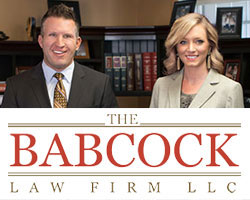Your law firm’s website is starting to have a positive impact on your bottom line. You’re seeing the “Contact Us” form filled out, phone calls have increased and it’s clear that this investment is bearing fruit. Now you’re wondering how to take the next step. You’ve secured e-mail addresses for people who at least had a fleeting interest in your services. How do you keep in touch with them and make sure they don’t forget you when they need to actually hire an attorney?
That’s where law firm email marketing comes in. Doing this effectively will require the execution of these 8 principles.
Tip #1: Have a catchy subject line.
You have to make sure your e-mail stands out, but as a law firm, you also have to walk a finer line than most other businesses. Sensationalistic or clickbaity titles that are fine for a news website will make you look unprofessional and defeat the purpose. So you need to find something that’s short, to the point and captures the urgency of what you have to offer without shouting it.
Tip #2: The content must be valuable.
This is not the place to just send out your firm’s internal monthly newsletter, with its features on the company picnic and the recent wedding of one of the partner’s kids. Your content has to be something the reader will find truly valuable.
Now, we don’t suggest you provide free consulting services. But you might curate 10 news stories in your particular area of law and offer a 2-3 sentence blurb on each one. In that case, you’re informing the reader of some news they might otherwise have missed and demonstrating your own expertise in the subject.
Tip #3: Keep good spacing.
Long paragraphs are not going to cut it in an email, even less so than anywhere else in the online world. Make sure your paragraphs are short. The best way to ensure good spacing is to make use of images to further enhance the visual quality of your content.
Tip #4: Call to action.
You’ve provided some valuable information at no cost, so you have the right to ask for something in return. Direct people to your “Contact Us” form and keep the phone number in front of them. Asking them to contact you—or take some other desired action—should be how your e-newsletter ends.
Tip #5: Make sure it’s mobile-responsive.
More than half of all emails are opened on mobile devices. Just because your website is mobile doesn’t mean your emails will automatically be responsive to the user’s device. The images need to be responsive as well. Send out a quality control email internally as a test and have your people check it on their phones.
Tip #6: Track the results.
This is more than just the obvious of checking the open rates and click-through rates of your email. You also want to test what day of the week and what time of day are the most optimum for your audience. When you start, send the emails out in batches at different times and monitor the results.
Tip #7: Segmentation.
The more information you have about your readers, the better. Maybe you got email signups through a conference on real estate law. With the right email software, you can tailor your e-newsletter to have different content for different audiences, based on what you know about them.
Tip #8: Rinse & repeat.
The most important principle is also the simplest: keep learning from the first 7 steps and do it all over again.






